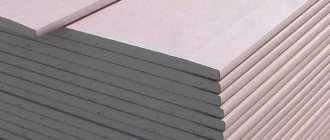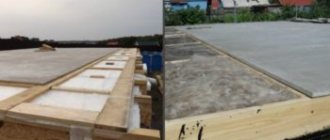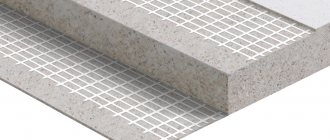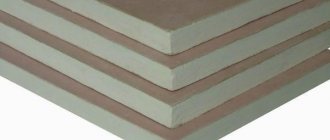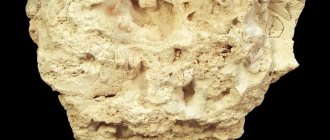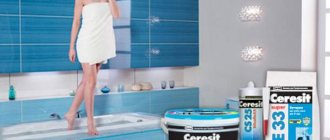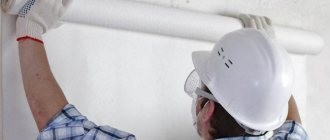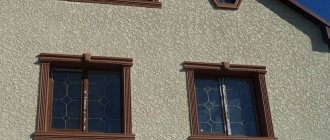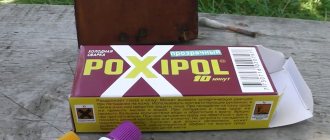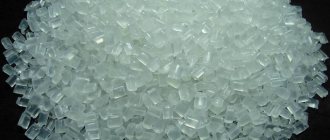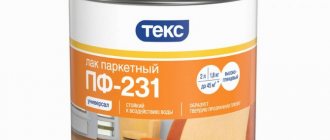How did OSB board appear?
Oriented strand boards OSB (OSB) appeared relatively recently, no more than 30 years ago. Their appearance was caused by the need to build houses using frame technology. To cover such buildings, a material was needed that would be durable, retain heat well, but at the same time be lightweight and easy to install.
Natural wood and chipboards, which became soaked under the influence of moisture, were not suitable for these purposes. However, as a result of experiments, American technologists developed a unique multilayer board that was able to satisfy all technological needs. This is how a chip-based board called OSB was born.
Comparison with lining
The lining is made of natural wood and does not contain harmful impurities. It is made from aspen or coniferous trees, including larch. In appearance, it is a plate of wood, which is tightly attached to a similar structure, using grooves for fastening.
Lining has positive properties, such as:
- natural composition of the material;
- has many types, divided into classes, of which the most popular is the one marked “E”;
- It has an aesthetic appearance and attracts prying eyes.
If we compare with OSB, then in the price category they will be approximately equal, in terms of technological properties too. The aesthetic and environmental component, of course, will be on the side of the lining. But the final decision remains with the owner of the house, because only he can decide what material will decorate his façade?
Material composition
OSB board is a modern approach to producing finishing material from wood waste. It consists of 3, 4 or more layers of chips, which are glued together with phenolic resins with the addition of paraffin, as well as boric acid.
This plate is called oriented because each layer has a different orientation. For example, if the first layer is glued longitudinally with fibers, then the second layer is vice versa - transversely. This ensures the strength of the products.
Indoor work
Advantages of OSB boards
When finishing a building inside, OSB is used in the following cases:
- For creating floor coverings.
When choosing building materials, the consumer thinks: can OSB boards be laid on the floor? OSB is a convenient option for such a procedure. It has a smooth surface and is strong. It is possible to lay directly on the base. Well suited for covering concrete screeds. This coating is a good base for laminate, linoleum or tiles. When using OSB for subfloors, you should choose at least the third class of material.
- For installing an internal partition.
In this case, the use of OS slabs will be a universal and practical solution. In a short time you get smooth surfaces that do not require special preparation for finishing. Plus, you additionally insulate the room. The sheets are fixed on an erected cellular frame filled with mineral wool.
Disadvantages of OSB panels
Here it is possible to use slabs of classes 2 and 3, not forgetting about additional processing. To do this, apply a paint and varnish composition and a further decorative base to the coating. For example, when decorating walls with tiles, we putty on the surface. To install the slabs correctly, follow these steps:
- Pre-prime the surface of the sheets. Thanks to this, the material will absorb the adhesive or paint composition less easily and release less resin.
- When further covering with wallpaper, it is advisable to add a small amount of PVA to the adhesive base.
- When painting slabs, it is recommended to use oil paints and saturate the surface with drying oil.
If the front side of the sheet is glossy, then minor problems cannot be ruled out. It is better to impregnate such slabs using a primer with the addition of quartz sand. Due to this, the surface becomes rough and other finishing materials are well fixed to the plane.
Repair of floors made of OSB boards (video)
Types of OSB boards
It must be said that the material under consideration is divided into four types. A specific type speaks about the characteristics and properties of the finishing material.
OSB1 is the lowest quality board. It has the lowest density, which is why this material does not tolerate environmental influences, and primarily moisture. Typically, OSB1 boards are used in the furniture industry for the manufacture of backing layers of furniture, in particular, frames of sofas and armchairs, which are subsequently covered with upholstery material.
OSB2 - this material has a higher density, which means it retains moisture much better. OSB2 boards are more often used for finishing walls in dry rooms with a low degree of humidity.
OSB3 is the most popular material among ordinary people. This is where we come across a combination of reasonable price and a high degree of moisture resistance. It is customary to sheathe the external walls of private houses and various utility buildings with such slabs. True, it cannot be said that the slab in question is able to withstand moisture for many years. Over time, under the influence of precipitation, the slabs may become deformed. To prevent this from happening, manufacturers recommend treating the OSB3 board with a special impregnation, varnish or paint after finishing the walls.
OSB4 - according to classification, this is the strongest, and therefore the most reliable and durable of the proposed oriented strand boards.
Excellent indicators of moisture resistance and strength make it possible to decorate the external walls of houses with such slabs without worrying about possible deformation of the material. Such a stove will retain its unchanged appearance even after 15 years of operation! However, the demand for it is not too great. It's all about the high price, because the cost of OSB4 is 2-3 times higher than the cost of an OSB3 board.
Application of OSB boards in residential premises and construction
As mentioned earlier, this material has very wide applications. It is suitable for construction, repair, finishing and furniture work. Possible applications depend on the properties of each class.
Osb board - technical characteristics
- OSB 2 – suitable for the production of furniture and finishing elements. This OSB board is used for interior decoration. This is a typical joinery panel that will perform well in residential interiors. Thin versions with a thickness of 8 and 12 mm can be used as the main material for wall coverings. Slightly thicker panels (eg 15mm thick) are well suited for furniture production such as cabinets and also furniture shelves.
- OSB 3 – the most popular is OSB 3, which is characterized by numerous possibilities of use. In this case, it is possible to use OSB boards for the floor, internal walls and ceilings. The 22mm thick panel is also suitable for rigid roof cladding. Large sizes, combined with the stability of the material, make it possible to appreciate it at its true worth.
- OSB 4 is the most durable and versatile board, suitable for use indoors and outdoors. It is highly resistant to adverse factors and has very high strength, so it can be used in particularly difficult conditions. However, it is not as widely used as its Group 3 counterparts due to its higher price. In some cases, the price is worth it. It is advisable to use OSB 4 for the construction of houses in a frame system, in the construction of formwork, as a backing and for rigid roofing coverings.
Which slab is suitable for the floor and roof?
Tongue-and-groove OSB is well suited for floors and roofs of houses. The tongue and groove connection is very convenient to use during installation work and ensures tightness. The flooring slab should have a thickness of 18 to 25 mm. The panels are laid perpendicular to the beams. You should also remember to leave a gap. Before installation, it is worth analyzing all the dimensions of the panels and cutting them to the desired format. The panel laid on the joists is fixed with special screws or ring nails.
The principles of installing panels on the roof are very similar. The thickness of the board depends on the pitch of the rafters. As a rule, panels with a thickness of 22 mm are used. It is also worth remembering that OSB roofing boards must be protected from the destructive effects of moisture. The maximum humidity of the slab during installation is 15%. To obtain this result, you need to store the material in a dry, protected area. This is quite important because installing OSB elements that are too wet can lead to later cracks in the roof sheathing.
Wall finishing with OSB boards
The panels can be used for mounting the walls of frame houses. The preferred thickness is usually 12 mm. OSB can be mounted both horizontally and vertically. However, during installation work, you must always remember that gaps of at least 3 mm must be left around the arches of window and door openings. External frame walls require an additional layer of insulation. Mineral wool is usually used for this. OSB wallboard is usually secured using long ring nails or self-tapping screws.
dimensions
The slabs in question are available in different thicknesses. The area of application of the slabs largely depends on this parameter, because the greater the thickness, the more multi-layered the material becomes.
1. Plates up to 16 mm. For example, the thinnest sheets up to 16 mm are used in the production of inexpensive furniture. As an option, they are used to make a base for a soft roof, for example, for ondulin or flexible tiles. Load-bearing structures are not created from such material due to its low strength.
2. Slabs with a thickness of 16 to 20 mm can be an excellent flooring for your home. In addition, this material can be used to sheathe the walls of a building and install partitions indoors.
3. The thickest slabs, from 22 to 26 mm , as a rule, are used to cover floors that require a high load (more than 100 kg per 1 sq. m.). These can be floors in workshops and production halls.
As for the size of the slabs, the standard material size is 1250x2500 mm. At the same time, in the store you can see material measuring 1220x2440 mm and 590x2450 mm. This variability allows you to choose exactly the sheet for your finishing, after installation of which there will be a minimum amount of waste left.
Classification of slabs according to the degree of surface treatment
The slabs in question are also classified according to the degree of surface treatment. In this regard, we can highlight:
1) Unpolished. A material with a rough surface that has good adhesive properties and easily adheres to bitumen coatings. Such slabs are best suited as a substrate for roofing.
2) Polished. In this case, you purchase a smooth slab, which has increased requirements for surface accuracy. Such OSB boards are suitable for forming wall coverings, which can be insulated in the future, or can remain without insulation.
3) Varnished. From the name it becomes obvious that the planes of such plates are sanded and then covered with one or several layers of varnish. As a result, you get an improved, protected and uniform coating that is not afraid of fungus. Such an OSB board will last 20 years without the slightest damage. True, its cost is quite high.
4) Laminated. This technology involves applying melamine-containing resins to the surface of the slab. Application is carried out by hot pressing on special mills, resulting in an OSB board with a smooth or even embossed (embossed) surface.
Differences in material according to edge shape
Most panels are available with a straight edge. In terms of performing rough work, such material is simply irreplaceable. But for forming walls or laying floors, it is wiser to pay attention to slabs with shaped ends, which have a tongue-and-groove system.
Thanks to this system, the plates fit perfectly into each other, providing maximum sound and heat insulation. In addition, the joints of the panels remain almost invisible.
Comparison of OSB with chipboard
Both OSB and fiberboard have been used for cladding residential premises or laying floors for many years. Many novice builders who have not encountered similar types of cladding compare these materials. In order to determine which one is stronger and better, you need to consider the properties of each of them.
The production of chipboard began at the beginning of the twentieth century and continues to this day.
The principle of manufacturing the product is to press wood waste and gluing them together with special resin-based compounds. After reproduction, the particle board is impregnated with special compounds to create a fire-retardant and water-repellent effect.
Such products are divided according to the degree of surface smoothness. One of the smoothest is the first grade, where there are no irregularities or chips.
When drawing parallels between materials, it is obvious that they are similar in the degree of creation and in the product from which they are reproduced, but there is a significant difference between them. The chips of the orientated particle board are quite large in size, sometimes reaching 15 centimeters, and the fiberboard consists of small elements with an uneven and rough surface.
The layer of resins holding OSB panels together is much thicker than when gluing fiberboard. The nature of the arrangement of chips gives OSB an advantage over its competitor in the reliability of the center and bending.
At first glance, it may seem that the products are similar, but this is not the case; there are a number of differences between them:
- The OSB panel has greater moisture resistance, which can last for some time in humid conditions, which cannot be said about fiberboard;
- both boards are highly reliable, but fiberboard is more susceptible to surface shedding in the end area;
- processing carried out on these materials is more likely to damage fiberboard than OSB because these sheets are susceptible to crumbling when the nail or screw is re-tightened;
- Fiberboard is much cheaper than OSB, and this is justified by a number of disadvantages inherent in such a board.
If OSB panels can be used not only as a floor, but also for facade work, then fiberboard is not recommended to be attached to the facade. This is due to insufficient strength and instability to moisture.
In terms of aesthetic properties, fiberboard is also inferior to its competitor. Such panels look unattractive, unless, of course, they were covered with a special decorative film. OSB is often used to decorate homes, and many homeowners like it because it somewhat resembles the surface of wood.
If we talk about density and resistance to mold, then the indicators for the two products are approximately the same.
Advantages
Like any other material, OSB boards have their advantages over other boards made from wood waste. These include:
1. "Advanced wood." Experts call the slabs in question “improved wood,” and all because, in comparison with wood, this material is more durable, lightweight and moisture resistant. Unlike solid wood, OSB board rots less, and there are no knots or cracks.
2. High strength. The bending strength of the OSB board is 22 MPa. For comparison, for a chipboard sheet this strength indicator does not exceed 14 MPa. In this regard, the slabs in question are chosen for the construction of structures that will be subject to serious loads during operation.
3. Resistance to external influences. If we take into account resistance to external influences and precipitation, then an OSB board is 3-4 times more resistant than a sheet of plywood made from coniferous veneer or a sheet of chipboard of the same thickness.
4. Resistance to moisture. The swelling coefficient of OSB3 sheet is only 10%. This suggests that a sheet of strand board immersed in water retains all its properties throughout the day and does not deform! This is achieved due to the fact that the thin wood chips that form each layer of the slab are pressed extremely tightly. In addition, each layer is glued with phenolic resins, there are no voids in them and they do not delaminate from moisture.
5. Perfect interaction with fasteners. Practice shows that the slab in question holds metal and wood fasteners five times better than any other material made from wood processing waste. Self-tapping screws are screwed into such material without pre-drilling holes, which is also an advantage.
6. Retains heat perfectly and does not allow sound to pass through. The slab in question has a higher ability to absorb sound and retain heat indoors compared to similar materials. This means it is cool in such a house in summer, and warmer in winter than in a room covered with chipboard. And such a room is much better protected from extraneous sounds.
7. Convenient insulation. OSB boards are even and smooth, which means that if you need to insulate a house whose walls are finished with OSB boards, you will not have any problems with laying the insulation. And this is a huge advantage compared to logs.
Important! By laying the slabs in question on the floor, you can safely install a “warm floor” system on them. Thanks to the flat design, it is convenient, and given the technical characteristics of the material, it is absolutely safe.
8. Resists insects. Another advantage of OSB boards is the fact that this material is not of interest to rodents, insects and termites. Thanks to this feature, the slabs retain their integrity even after 15 years of use, without being destroyed by pests.
9. Lightness of the material. Compared to solid wood, the boards under study are two times lighter. And this is a serious advantage that becomes especially noticeable during the installation process. Moreover, lightweight slabs do not exert serious pressure on the foundation, and this is a significant saving when constructing the foundation of a building.
10. Ease of processing the material. Let us also add that the slabs in question are easy to process. It is convenient to saw them with a hacksaw or cut them with a jigsaw, and with a circular saw such material can be cut in just a few seconds.
We can conclude that OSB boards are an ideal solution for cladding frame houses, as well as the construction of attics and the construction of outbuildings, especially in regions with warm and temperate climates where there are no severe winters. This material can stand for years without deforming at all and without being exposed to external influences.
Description of OSB (OSB)
Painted OSB.
In the original, the name of this product sounds like oriented strand board (abbreviated as OSB). In Russian, they operate with an exact translation of this concept - oriented strand board.
This sheet material is made from wood chips, the layers of which are glued together using a mixture of synthetic resins, wax, and boric acid. After pressing, the panel acquires high strength, which is achieved by different orientations of the chips. Its outer layers are laid lengthwise, the inner ones - across.
Material composition
The basis for the production of OSB boards are various types of wood - both deciduous and coniferous. The raw material is cut into thin chips up to 150 mm long.
The binder in production is wax in combination with adhesives, the ingredients of which include paraffin, phenol-formaldehyde or isocyanate resins.
Boric acid plays the role of an insecticide. The wood chips are mixed with these components in stages. Then the panels are formed and pressed.
Characteristics of OSB boards
In the European Union, products are manufactured according to a single standard EN300, which contains a breakdown of the key characteristics of the material.
These include:
- strength, density, load resistance;
- flexibility;
- resistance of the front (smoother) surface to abrasion;
- high-quality adhesion to various materials;
- ease of processing;
- fire resistance.
What does OSB board look like?
OSB sheet consists of several layers of wood chips. Their number, as in plywood, increases with the thickness of the material. During the production of slabs, chips must be oriented in different ways: in the outer layers - longitudinally, in the inner layers, on the contrary, transversely. This increases the strength of the products.
Each panel has a front side intended for subsequent finishing. It is smooth and looks neater.
OSB board appearance.
Performance properties
Today, 4 types of OSB boards are produced. They differ in their technical characteristics and, accordingly, have different operational properties.
Each category has its own area of use where the product will perform best:
- OSB 1 - boards of the lowest strength. They do not tolerate high humidity well and are not intended for use in construction. Their scope of application is the production of furniture or containers.
- OSB 2 - panels of higher density. They are used for interior decoration of low-level rooms. Products with this marking are not intended for outdoor use.
- OSB 3 - boards for outdoor work. They are resistant to mechanical stress, retain their properties in conditions of high humidity, but can become deformed when placed in water. For additional protection, the material is coated with paint, primed, and treated with special impregnations.
- OSB 4 - panels of maximum strength. They are used for external work when installing loaded structures (floors, roofs). The material is resistant to moisture, vibration, and mechanical stress. The low distribution of slabs of this type is due to their high price.
Types of slabs.
Types of material
In addition to technical characteristics, OSB sheets may differ from each other in physical and even aesthetic properties. The appearance of the slabs and the properties of their surface determine how the material will fit into the interior and how convenient its subsequent processing will be.
Types of sheets:
- Unpolished. The simplest option is without surface treatment - they remain rough and rough, with splinters sticking out. The advantage of unsanded panels is their low cost, good connection with other materials, and no slipping. Untreated slabs are used mainly in roofing work and when installing sheathing.
- Polished. Here the surface of each sheet is carefully processed and cleaned. It can be coated with paint and varnish material without additional treatment. However, the cost of the material increases in comparison with the unpolished version.
- Lacquered. These products are sanded and varnished in an industrial environment. Due to processing, they acquire additional moisture resistance and an attractive appearance.
- Laminated. Their surface is covered with a special polymer material, which increases the strength of the sheet and its service life. Laminated products look good, but their cost is high.
Varnished OSB board.
Classification by edge
OSB boards are available with straight or profiled edges. In the first case, the mounted panels are a rough base that requires further finishing. They can be used to make containers, furniture blanks, and cut products with complex geometries.
The profiled edge allows you to obtain a finished surface without gaps or cracks immediately after installation. For this purpose, the end of the sheet has a tongue-and-groove connection or a selected quarter to ensure high-quality and even joining of products while maintaining maximum heat and moisture insulation.
Flaws
Considering the number of advantages that the slab in question has, one cannot help but mention some of the disadvantages of this material. So:
1. Unpleasant odor. The production of the material involves the use of phenolic resins and boric acid, which contributes to the appearance of an unpleasant odor in the finished product, which can take a long time to dissipate. This drawback is especially noticeable when covering walls and floors inside the house. And if an expensive material takes 3-4 weeks to completely dissipate the smell, then cheap slabs can take up to six months!
Important! Typically, the problem of odor from slabs is due to the fact that the buyer saves money by choosing slabs intended for outdoor use for interior decoration. Such slabs have a persistent odor, because their main emphasis is on resisting moisture and external precipitation. Such slabs should not be used for interior decoration!
2. Formaldehyde fumes. An unpleasant odor is certainly a problem with OSB boards, but it is by no means the key one. Much more dangerous are the toxic fumes that are released from the stoves during operation. By the way, this is a problem for all materials processed from sawdust and wood chips. At the same time, the OSB board emits two times less toxic fumes than the chipboard board. It’s just that significantly less resins are used to make these boards.
However, emissions from the material are present, which means that such slabs are not suitable for finishing residential premises, in particular, a hall, a children's room and a bedroom. Higher quality material also has a minimal amount of toxic resins, which means that before purchasing it is important to request a product quality certificate from the seller and make sure that the material you are purchasing will not harm your health. Remember, a material that is safe for health must have class E1, and ideally E0.
3. Low vapor permeability. Another disadvantage of the material being studied is the minimal vapor permeability of OSB boards. Many people do not pay attention to this indicator and it is completely in vain. If you cover the floor and walls of your home with oriented strand boards, a real “thermos” is formed inside, preventing fresh air from freely entering and leaving the room. In such a room there will be a real steam room, and you will have to constantly keep the window open for full air exchange.
4. Destroyed by fungus. Still, it is worth recognizing that even when using a large amount of resins, the basis of OSB panels is lumber, which, like any wood, is destroyed by fungus. This applies to both panels for interior decoration and OSB boards produced specifically for facade finishing. To ensure they last as long as possible, manufacturers recommend additionally treating the surface of the panel with antiseptics and other antifungal materials.
OSB or drywall?
Modern craftsmen use plasterboard as the main material for finishing houses, because it has a number of positive characteristics:
- environmental friendliness of the product. The material contains gypsum, water and cardboard;
- durable structure;
- durable use;
- the ability to cover the slab with various decorative elements, such as stucco molding, paint and varnish coatings or porcelain stoneware;
- safety for others. Only when cutting the product you need to know that the mouth and eyes must be protected from chips;
- price is an important component of the product. You can save significant financial resources on the purchase of this material;
- ease of construction. This is especially important when one technician is involved in the repair.
Despite many advantages, drywall also has disadvantages , such as:
- Increased deformation of the slabs when trying to attach objects of great weight to them.
- Cutting the product is accompanied by the appearance of debris around the perimeter of the room. You need to protect your face tightly from it.
- Reduced space due to the additional need to install a frame.
- The difficulty is in hanging additional items on plasterboard walls.
If you compare two products with each other, you can understand that they are approximately similar in price , which means that the choice must be based on other parameters.
In terms of the minimal impact of harmful materials on human health, of course drywall wins , since it practically does not evaporate substances that can cause harm. OSB contains resins that have a negative effect on humans. The remaining parameters are selected according to the individual preferences of the owner.
Scope of application
1) Covering frame houses and interior partitions. We have already decided that OSB boards are ideal for cladding frame houses and interior partitions in them.
2) Leveling the floors. Flat and smooth slabs are ideal for forming rough and finishing flooring. This material is the best way to level floors.
3) Lathing during roofing. OSB boards are widely used as sheathing for roofing. Slate, ondulin, as well as any soft roofing, such as soft tiles, can be laid on them.
4) Creation of SIP panels. Oriented strand board is used to create another well-known finishing material - SIP panels. These are sandwich panels that are popular today, consisting of two OSB boards at the edges and expanded polystyrene foam in the middle. This material has improved thermal insulation properties and can be used for the construction of building walls in northern conditions.
SIP panels are also ideal for forming floors. This material is laid directly on the logs, and on top of it you can lay ceramic tiles, laminate, linoleum, carpet or any other floor covering.
5) Formwork when pouring concrete for the foundation. Separately, we will say that oriented strand boards are ideal for forming formwork when pouring concrete. Thanks to the flat and smooth surface, the poured foundation turns out to be perfectly level, and the concrete does not stick to the surface of the OSB slab at all. Thanks to these features, formwork made from this material can be reused many times.
Reliable OSB manufacturers
There are many manufacturers of slabs today. The leading positions among them are traditionally occupied by companies from Europe and North America. Russian brands are also beginning to gain popularity among builders who use OSB in the construction of houses and finishing of premises.
The slabs produced must comply with the requirements of the international standard EN 300, regardless of where they were manufactured.
Ultralam
This Russian company produces OSB boards according to additional internal standards. They reduce the amount of formaldehyde used in the production of the material. Therefore, Ultralam products are the safest option for indoor use.
The high density of the plates from this manufacturer guarantees high-quality installation of fasteners.
The self-tapping screw into the Ultralam sheet is difficult to screw into place, but during further use it will not wobble or fall out of the wall.
Ultralam is a Russian slab production company.
Kronospan
An international manufacturer whose factories are located in Latvia, Romania, Belarus, and Russia. The brand's products are distinguished by high environmental performance. OSB boards of this brand belong to class E1. They can be used for both external and internal work.
An advantage for builders is that Kronospan products have two types of surfaces: smooth front and rough internal. This significantly increases the speed of work due to the error-free positioning of the material.
Plates from Kronospan.
Glunz
Construction products made in Germany are considered high quality by default. The Glunz brand is the largest manufacturer of OSB boards in Europe.
A specialized scientific laboratory has been created on the basis of the enterprise. Its task is to improve the quality of manufactured products.
The products of this manufacturer are distinguished by a high class of fire and environmental safety, strength and durability. But its price is also higher than for analogues of other brands.
OSB from the best German company Glunz.
DOK "Kalevala"
Russia, covered with forests, for a long time could not launch its own line for the production of oriented strand board and imported goods from the EU or Canada.
The pioneer of the industry was the Kalevala brand, which uses Karelian wood chips to create OSB panels. The products are characterized by a rough surface inside and outside.
The products of this brand comply with the international standard EN300. This allows the company to sell OSB boards outside of Russia.
OSB from Russian.
EGGER
OSB sheets began to be used as a building material in Europe back in the 1960s. It's hard to guess from photos of many European houses that they are built from oriented strand boards, but it's true.
One of the first to launch the production of this material was the Austrian brand EGGER, whose history began with a small family factory.
Today it has turned into a large concern that unites about 20 factories in different EU countries and does not know what a compromise is. The brand produces OSB of only the highest quality.
OSB sheets from the Austrian company EGGER.
